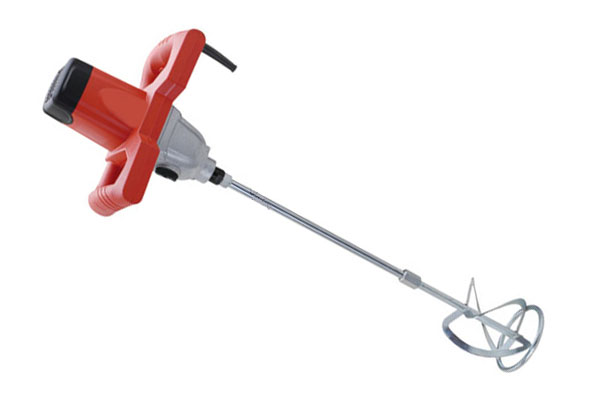If there are any would-be or fully fledged commercial soapers around here, I'd like to discuss equipment and production procedures.
The following are my thoughts and findings, feel free to share your own or have a read!
I will focus mainly on liquid soap, so there will be some similarities to HP soap making in this comment, a bit less with CP soap making - which is generally less demanding in terms of production equipment anyway. The biggest investment there would be a soap log cutter that can handle large blocks.
Equipment:
The ideal:
A double-jacketed heated tank coupled with a batch homogenizer.

The mixer:

As you can see on the second picture, this particular design has interior heating elements and doesn't use a double-layered jacket of enclosed water/oil for double boiler-like heating. This is quite likely not appropriate for soap, as it may burn. A possibility exists that it may work, if LS paste stage is skipped and the final dilution water amount is used from the get go. Such a thing would normally drastically slow down the reaction, but the homogenizer (stick blender on more steroids than you can imagine) may or may not take care of that and speed up the reaction so much that no paste stage is even necessary. I took these pictures at work, which isn't a soaping lab.
The homogenizer in full glory:

Another example of a suitable soap production line:

But as far as I can see, there are no heating elements of any sort here, so this one would be limited to cold process.
I imagine this device would bring us to trace/paste stage in the blink of an eye, which doesn't usually take long in the first place. So we are, indeed, talking OVERKILL here. Unless, as stated before, soaping with large amounts of water is desired. A simpler and cheaper, albeit more time consuming option has to exist.
End of part 1.
Part 2, more equipment talk
This is what I was thinking as far as less overkill and more budget-friendly approaches would look like:
To simulate a large double boiler one could insert a 18.5 gallon brew pot inside a 26 gallon brew pot and heat the entire thing on a (suitably protected from the immense weight) portable electric stove

For mixing, a paint mixer could be used

In this case, paste stage absolutely cannot be skipped, as the mixer's capabilities simply don't allow for it. Unless you want to mix and heat a batch for 3 days straight.
Inside the 18.5 gal pot, about 10.5 gallons of paste could be made, which could then be transfered to the 26gal pot for dilution (the smaller pot taken out, of course). In a 50% dilution scenario we could then produce 21 gallons of diluted LS per batch. Once it has finished diluting and we've added EOs and such, the soap could be drained through the pipe seen at the base of the pot

End of Part 2, end of equipment talk.
The following are my thoughts and findings, feel free to share your own or have a read!
I will focus mainly on liquid soap, so there will be some similarities to HP soap making in this comment, a bit less with CP soap making - which is generally less demanding in terms of production equipment anyway. The biggest investment there would be a soap log cutter that can handle large blocks.
Equipment:
The ideal:
A double-jacketed heated tank coupled with a batch homogenizer.

The mixer:

As you can see on the second picture, this particular design has interior heating elements and doesn't use a double-layered jacket of enclosed water/oil for double boiler-like heating. This is quite likely not appropriate for soap, as it may burn. A possibility exists that it may work, if LS paste stage is skipped and the final dilution water amount is used from the get go. Such a thing would normally drastically slow down the reaction, but the homogenizer (stick blender on more steroids than you can imagine) may or may not take care of that and speed up the reaction so much that no paste stage is even necessary. I took these pictures at work, which isn't a soaping lab.
The homogenizer in full glory:

Another example of a suitable soap production line:

But as far as I can see, there are no heating elements of any sort here, so this one would be limited to cold process.
I imagine this device would bring us to trace/paste stage in the blink of an eye, which doesn't usually take long in the first place. So we are, indeed, talking OVERKILL here. Unless, as stated before, soaping with large amounts of water is desired. A simpler and cheaper, albeit more time consuming option has to exist.
End of part 1.
Part 2, more equipment talk
This is what I was thinking as far as less overkill and more budget-friendly approaches would look like:
To simulate a large double boiler one could insert a 18.5 gallon brew pot inside a 26 gallon brew pot and heat the entire thing on a (suitably protected from the immense weight) portable electric stove

For mixing, a paint mixer could be used

In this case, paste stage absolutely cannot be skipped, as the mixer's capabilities simply don't allow for it. Unless you want to mix and heat a batch for 3 days straight.
Inside the 18.5 gal pot, about 10.5 gallons of paste could be made, which could then be transfered to the 26gal pot for dilution (the smaller pot taken out, of course). In a 50% dilution scenario we could then produce 21 gallons of diluted LS per batch. Once it has finished diluting and we've added EOs and such, the soap could be drained through the pipe seen at the base of the pot

End of Part 2, end of equipment talk.














































